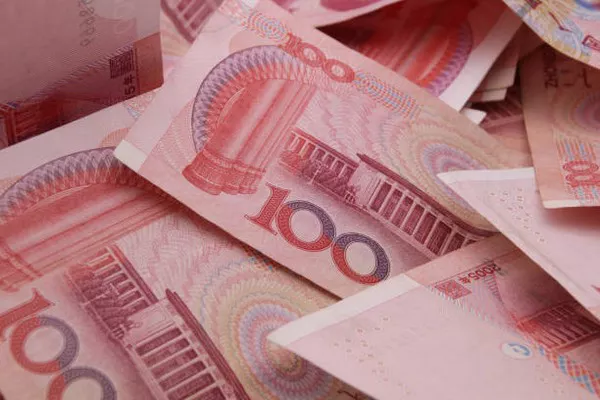The trajectory of the Chinese Yuan, also known as the Renminbi (RMB), has long been a subject of global interest and speculation. Over the past few years, the currency has faced significant fluctuations influenced by various internal and external factors. Amidst trade tensions, economic reforms, and geopolitical shifts, the question looms large: Will the Yuan ever recover its former strength? In this article, we delve into the complexities surrounding the Yuan’s performance, examining its current state, potential factors impacting its future, and the likelihood of recovery.
Current State of the Yuan
Since its devaluation in 2015, the Yuan has experienced a series of ups and downs. Initially, the devaluation was seen as a strategic move by the People’s Bank of China (PBOC) to boost exports and stimulate economic growth. However, concerns about currency manipulation and trade imbalances led to tensions with major trading partners, particularly the United States. The ensuing trade war further exacerbated fluctuations in the Yuan’s value, causing it to weaken against the US Dollar.
As of [current date], the Yuan stands at [exchange rate], reflecting a [percentage] decline against the US Dollar compared to [time period]. This decline has raised apprehensions among investors and economists about the Yuan’s stability and long-term prospects. Factors such as China’s slowing economic growth, rising debt levels, and financial market volatility contribute to the uncertainty surrounding the currency.
Factors Influencing Yuan’s Performance
Economic Indicators
China’s economic indicators play a crucial role in determining the Yuan’s performance. Key factors such as GDP growth, industrial output, and trade balance directly impact market sentiment and investor confidence. Slower-than-expected economic growth, coupled with concerns about the sustainability of China’s debt-driven expansion model, can weigh heavily on the Yuan.
Geopolitical Tensions
Geopolitical tensions, particularly those with the United States, have significant implications for the Yuan. Trade disputes, sanctions, and diplomatic strains can lead to market volatility and capital outflows, exerting downward pressure on the currency. Moreover, geopolitical uncertainties may undermine confidence in China’s financial markets and policy stability, further dampening the Yuan’s prospects.
Monetary Policy
The People’s Bank of China (PBOC) plays a central role in managing the Yuan’s exchange rate through monetary policy interventions. Adjustments to interest rates, reserve requirements, and foreign exchange reserves influence the supply and demand dynamics of the Yuan. However, policymakers must strike a delicate balance between supporting economic growth and maintaining exchange rate stability to prevent excessive depreciation or inflationary pressures.
Global Economic Conditions
Global economic conditions, particularly those affecting major trading partners and commodity prices, can impact the Yuan’s value. Changes in global demand, supply chain disruptions, and fluctuations in commodity markets may alter the outlook for China’s exports and overall economic health, thereby affecting the Yuan’s exchange rate.
Prospects for Recovery
Despite the challenges facing the Yuan, several factors could contribute to its potential recovery:
Economic Rebalancing
China’s ongoing efforts to rebalance its economy towards domestic consumption and innovation-driven growth could bolster the Yuan’s resilience. By reducing reliance on exports and investment-led expansion, China aims to create a more sustainable and balanced growth model, which could improve investor confidence in the Yuan over the long term.
Financial Reforms
Continued financial reforms aimed at liberalizing China’s capital markets and improving transparency could enhance the attractiveness of the Yuan as an international reserve currency. Measures such as opening up bond and equity markets to foreign investors, expanding access to offshore Yuan trading, and strengthening regulatory frameworks may foster greater confidence in the Yuan’s stability and liquidity.
Globalization of the Yuan
China’s efforts to promote the internationalization of the Yuan, through initiatives such as the Belt and Road Initiative (BRI) and the establishment of offshore Yuan clearing centers, could facilitate its broader adoption in cross-border trade and investment. Increased use of the Yuan in international transactions could reduce reliance on the US Dollar and enhance its role as a global reserve currency, supporting its long-term appreciation.
Policy Coordination
Effective coordination of monetary and fiscal policies, both domestically and internationally, is essential to ensure the stability of the Yuan. Close cooperation between central banks and regulatory authorities can help mitigate currency risks, manage capital flows, and maintain exchange rate stability amidst global economic uncertainties.
Conclusion
The trajectory of the Chinese Yuan remains subject to various internal and external factors, making predictions about its future challenging. While the Yuan has faced significant headwinds in recent years, including trade tensions and economic uncertainties, there are reasons to be cautiously optimistic about its prospects for recovery. Continued economic rebalancing, financial reforms, globalization efforts, and policy coordination could contribute to the Yuan’s resilience and long-term strength in the global currency landscape.
FAQs
Why has the Yuan been depreciating against the US Dollar?
The depreciation of the Yuan against the US Dollar can be attributed to several factors, including trade tensions between the US and China, concerns about China’s economic slowdown, and shifts in global market sentiment. Additionally, the People’s Bank of China (PBOC) has occasionally intervened in the currency market to manage fluctuations in the exchange rate.
How do trade tensions impact the Yuan’s value?
Trade tensions between the US and China can lead to market uncertainty and capital outflows, exerting downward pressure on the Yuan’s value. Tariffs and trade restrictions imposed by either country can disrupt supply chains, affect export competitiveness, and dampen investor confidence, all of which can weigh on the Yuan.
What measures has China taken to stabilize the Yuan?
China has implemented various measures to stabilize the Yuan, including intervention in the foreign exchange market by the People’s Bank of China (PBOC), adjustment of interest rates and reserve requirements, and communication of policy intentions to the market. Additionally, China has sought to promote the internationalization of the Yuan and strengthen its role in global finance.


